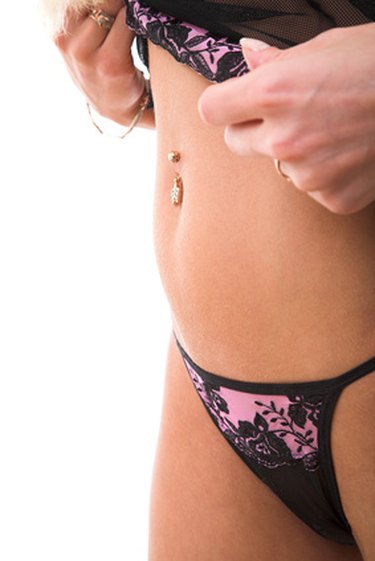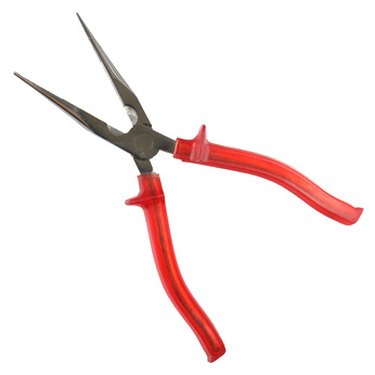Things You'll Need
Needle-nose pliers of an appropriate size
Masking, electrical, or cellophane tape
Latex or nitrile gloves (optional, recommended)
Cotton swabs (optional)
Rubbing alcohol (optional)
Antibiotic/bacitracin ointment (optional)
Ring expanding pliers (optional)
Ring closing pliers (optional)

Get the most enjoyment out of your piercing by removing a stubborn captive bead ring (CBR) easily, with no damage to the skin or jewlery. New captive bead rings, especially those made of surgical steel or having thick ring gauges, can hold the center bead extremely tightly making it painful and dangerous to remove from your piercing. You can comfortably and quickly remove a tight captive bead ring using simple tools.
Selecting the Right Pair of Pliers For Your Captive Bead Ring
Step 1
Purchase a pair of "expanding ring pliers" from an online store which carries piercing jewelry and equipment for an easy, ideal removal of your captive bead ring. Expanding ring pliers can be purchased at a variety of websites, such as bodycandy.com and can cost anywhere from $8 to $30. If you are unable to purchase your own expanding ring pliers, proceed to step two for an efficient home-made alternative.
Video of the Day
Step 2

Choose a pair of commonly available needle-nosed pliers. Hardware and "dollar" stores will have a variety of sizes. A captive bead ring with an inner diameter of an inch or larger will require longer pliers; while a ring with an inner diameter of half an inch or less requires smaller, thinner jaws on the pliers.
Step 3
Wrap the jaws of the pliers individually with the masking or other tape you have selected. Wrap a few layers of tape around each jaw to ensure that the pliers will not leave any marks or scratches on your captive bead ring.
Clean and Remove the Captive Bead Ring
Step 1
Remove any bodily matter that may have accumulated on your captive bead ring. If the piercing is new (less than 12 weeks old) or if it is in a body area where it is constantly irritated by clothing your CBR may have accumulated crusted bodily fluids from the opening in the skin. Remove any dirt or material from your CBR with a cotton swab and rubbing alcohol.
Step 2
Insert the expanding ring pliers into the inner rim of the captive bead ring. Gently apply pressure to the pliers until the bead falls free of the ring. If you are using a home modified pair of needle-nosed pliers, insert the closed pliers into the inner rim of the CBR, then apply gentle pressure to open the pliers until the bead is freed. You are now free to remove the ring from your piercing.
Step 3
Apply an antibiotic ointment to the ring before moving the captive bead ring through the piercing and out of your body if the piercing is painful, red, or irritated. Finish removing the captive bead before applying any ointments.
Tip
Wear latex or nitrile gloves before handling any piercing. This prevents contamination and gives you a better grip on the ring and bead.
Use gentle pressure when opening the captive bead ring; overstretching the ring will loosen the grip on the captive bead.
If you overstretch the ring and its grip on the bead becomes too loose, use ring closing pliers or your taped needle-nosed pliers to gently close the ring without the bead in the gap until the right amount of tension returns to the ring.
Warning
Removing jewelry from a piercing before it is fully healed can lead to the piercing closing up or becoming infected.
Never remove a ring that is crusted with bodily matter, it can scratch the inside of your piercing causing irritation or infection.
Do not allow the ring or bead to become scratched by whatever tools you use. Damaged jewelry can irritate a piercing, leading to infection or rejection.
Never share piercing jewelry with others. Only use jewelry that you are confident is clean, sterile, and free of infectious contaminants.
Video of the Day